Awareness of your brand is more critical in today’s fast-moving digital space.
Among the many available platforms, Google Ads has emerged as one of the most effective tools to enhance visibility and engage with your audience.
This is where an awareness campaign through Google Ads lets you reach out to your potential customers, build credibility, and set the path for long-term success.
Whether you’re new to Google Ads or looking to optimize your existing campaigns, understanding the essentials can make all the difference.
This article will guide you through maximizing the effectiveness of your awareness campaigns using Google Ads.
- Understanding Google Ads for Awareness Campaigns
- Setting Up Your Google Ads Awareness Campaign
- Targeting and Audience Strategies
- Creating Compelling Ad Creatives
- Measuring and Optimizing Campaign Performance
- Summing Up Your Google Ads Awareness Campaign Journey
- Google Ads Awareness Campaigns: Frequently Asked Questions
Understanding Google Ads for Awareness Campaigns
Google Ads is one of the great platforms where your business can achieve its aim to promote your product and service.
Awareness can’t just revolve around direct sales but sometimes building long-term impressions for your brand.
Awareness is actually when a campaign needs to create that memorable experience wherein your brand can stick to the tops of their minds.
To truly understand how Google Ads fits into your awareness strategy, it’s important to know the basics.
Awareness campaigns leverage high-visibility ad placements across Google’s search and display networks to attract attention.
These campaigns focus on engaging visuals, compelling messages, and strategic targeting to achieve their goals.

A conceptual visualization of awareness campaigns in digital marketing, highlighting the connection between global audiences and brand visibility.
Defining Awareness Campaigns in Digital Marketing
An awareness campaign is a marketing strategy aimed at making more people aware of your brand.
The focus is on building more brand recognition rather than trying to convert people right away.
Awareness campaigns are particularly important for new businesses, new product releases, and brands seeking to enter highly competitive markets.
- High-impression ad formats designed to capture attention
- Messaging that emphasizes brand values and unique selling points
- A focus on engagement metrics like impressions, reach, and click-through rates (CTR)

Illustrating the impact of Google Ads in building brand awareness through advanced targeting and analytics.
The Role of Google Ads in Building Brand Awareness
With Google Ads, one gets unparalleled visibility options.
The huge reach on the Search Network, YouTube, and Display partners ensures that your brand appears at every corner that your audience frequents most.
This allows an awareness campaign to place advertisements in high-traffic areas where they can easily be viewed.
Some of the benefits derived from running awareness campaigns on Google Ads include:
- Wide reach of audience across platforms and devices
- Advanced targeting options to connect with specific demographics
- Real-time analytics that help track the effectiveness of your campaigns
A visual representation of the essential metrics used to track the success of awareness campaigns.
Core Metrics for Awareness Campaign Success Tracking
Awareness campaigns differ from performance campaigns and use metrics that demonstrate how visible the ads are or how well the target audience engages with them.
Key metrics to consider include:
- Engagement Rate: The percentage of users interacting with your ad by clicking on it or watching a video
- Brand Recall: Measured through surveys or third-party tools that determine how well users remember your brand after seeing your ads
Awareness campaigns through Google Ads help businesses achieve high visibility with strategic ad placements and compelling visuals, setting the foundation for long-term brand recognition.

Visualizing the setup process for a successful Google Ads awareness campaign.
Setting Up Your Google Ads Awareness Campaign
Running a Google Ads awareness campaign is a deliberate step in improving the visibility of your brand.
A well-structured setup ensures your ads reach the right audience, effectively communicating your brand’s message.
That said, let’s dive into the key steps in setting your campaign up for success.
First, it’s crucial to define your campaign objectives.
Are you aiming to maximize reach, increase impressions, or boost engagement?
Clearly outlining your goals will guide the entire setup process, ensuring each component aligns with your desired outcomes.
Next, select the appropriate campaign type.
For brand awareness, Google offers several options:
- Display Campaigns: These are ads running on Google’s Display Network, targeting users on various websites and apps. They work wonders for visual appeal and wide reach.
- Video Campaigns: Using platforms such as YouTube, video ads tell an engaging story that captures attention and fosters better brand recall.
- Discovery Campaigns: These ads appear in personalized feeds, such as YouTube’s homepage, Gmail, and Google Discover, reaching users when they are open to discovering new content.
After choosing the campaign type, the next step is targeting.
Leverage Google’s advanced targeting options based on demographics, interests, geographic locations, and online behaviors.
Precision targeting ensures that your ads are seen by the most relevant audience, adding value to your campaign.
Another crucial factor is budgeting.
Establish a budget consistent with your goals for brand awareness, then choose a bidding method focused on reach or impressions.
Regularly monitor and adjust your budget and bids to maintain your campaign’s performance.
Ad creatives should be compelling.
This means creating visually appealing ads with clear messaging that resonates with your target audience.
Include strong calls-to-action to encourage user engagement.
The quality of ad creatives can significantly impact the success of your campaign.
Lastly, implement conversion tracking to evaluate the effectiveness of your campaign.
Keep an eye on key metrics such as impressions, reach, and engagement rates to gauge your campaign’s performance.
Use this data for informed adjustments and optimizations.
By following these steps, you can create a solid foundation for your Google Ads awareness campaign and set up your brand for better visibility and engagement.
Ensure your Google Ads campaign is aligned with clear objectives, strategic targeting, and well-defined budgets to maximize reach and effectiveness.

A conceptual illustration of targeting and audience strategies in digital marketing campaigns.
Targeting and Audience Strategies
Effectively reaching your desired audience is crucial for the success of your Google Ads awareness campaign.
Implementing precise targeting and audience strategies ensures that your brand message resonates with those most likely to engage.
Let’s explore key approaches to optimize your campaign’s reach and impact.

A visual representation of identifying and defining the ideal target audience using data-driven tools.
Identifying and Defining Your Target Audience
Knowing who your ideal customers are forms the basis of any successful awareness campaign.
Start by studying your current customer base to understand common characteristics, including demographics, interests, and behaviors.
Use Google AnalyticsA web analytics service by Google that tracks and reports website traffic and user behavior. to learn about your website visitors: age, gender, location, and browsing habits.
Consider creating detailed buyer personas that encapsulate the traits of your target audience.
This practice helps in tailoring your ad content to meet the specific needs and preferences of different customer segments, enhancing engagement and brand recall.
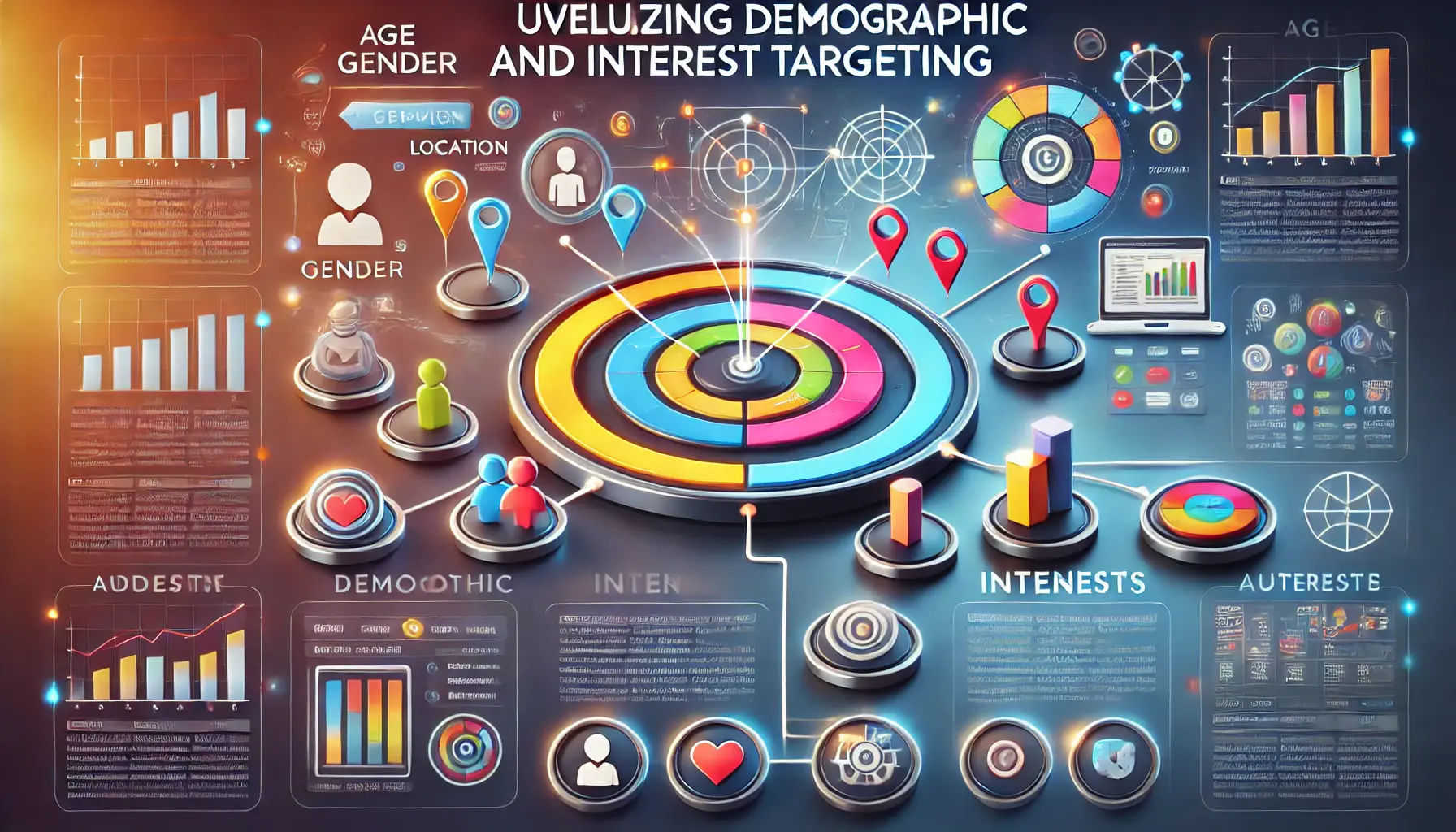
An illustration of demographic and interest targeting strategies for effective audience engagement.
Utilizing Demographic and Interest Targeting
Targeting in Google Ads allows you to reach an audience based on specific demographics or interests.
This ensures your ads are shown only to users who match the ideal customer profile for your brand.
- Demographic Targeting: Direct your ads to users based on their age, gender, parental status, or household income. This precision helps allocate your budget efficiently by focusing on those most likely to be interested in your brand.
- Affinity Audiences: Target users who have shown interest in topics related to your products or services. For instance, if you sell fitness apparel, you can target people interested in health and wellness activities.
- In-Market Audiences: Reach potential customers who are actively researching or comparing products and services like yours. This approach connects you with users further along in the buying cycle.
These targeting options enhance the relevance of your ads, driving higher engagement and increasing brand awareness.

An illustration of remarketing strategies to reconnect with users and enhance brand recall.
Leveraging Remarketing to Reinforce Brand Recall
Remarketing is an intelligent strategy that targets users who have previously visited your website or app.
By displaying customized ads across other websites or apps in the Google Display Network, you reinforce brand recall and encourage users to return to your site.
To set up a remarketingA strategy that targets users who have previously interacted with your website or app, encouraging them to return. campaign:
- Create a Remarketing List: Define the criteria for users to include, such as those who visited specific pages or performed certain actions on your site.
- Develop Customized Ad Creatives: Design ads tailored to the interests or behaviors of your remarketing list segments. Offer incentives or highlight relevant products to re-engage these users.
- Set Frequency Caps: Control how often your ads are shown to prevent ad fatigue and ensure a positive user experience.
By implementing remarketing strategies, you maintain a connection with potential customers, increasing the likelihood of future engagement and conversions.
Incorporating these targeting and audience strategies into your Google Ads awareness campaign will enhance your ability to connect with the right users, effectively conveying your brand message and achieving your marketing objectives.
Effective audience targeting using demographics, interests, and behaviors ensures your ads reach the most relevant users, boosting engagement and brand recall.
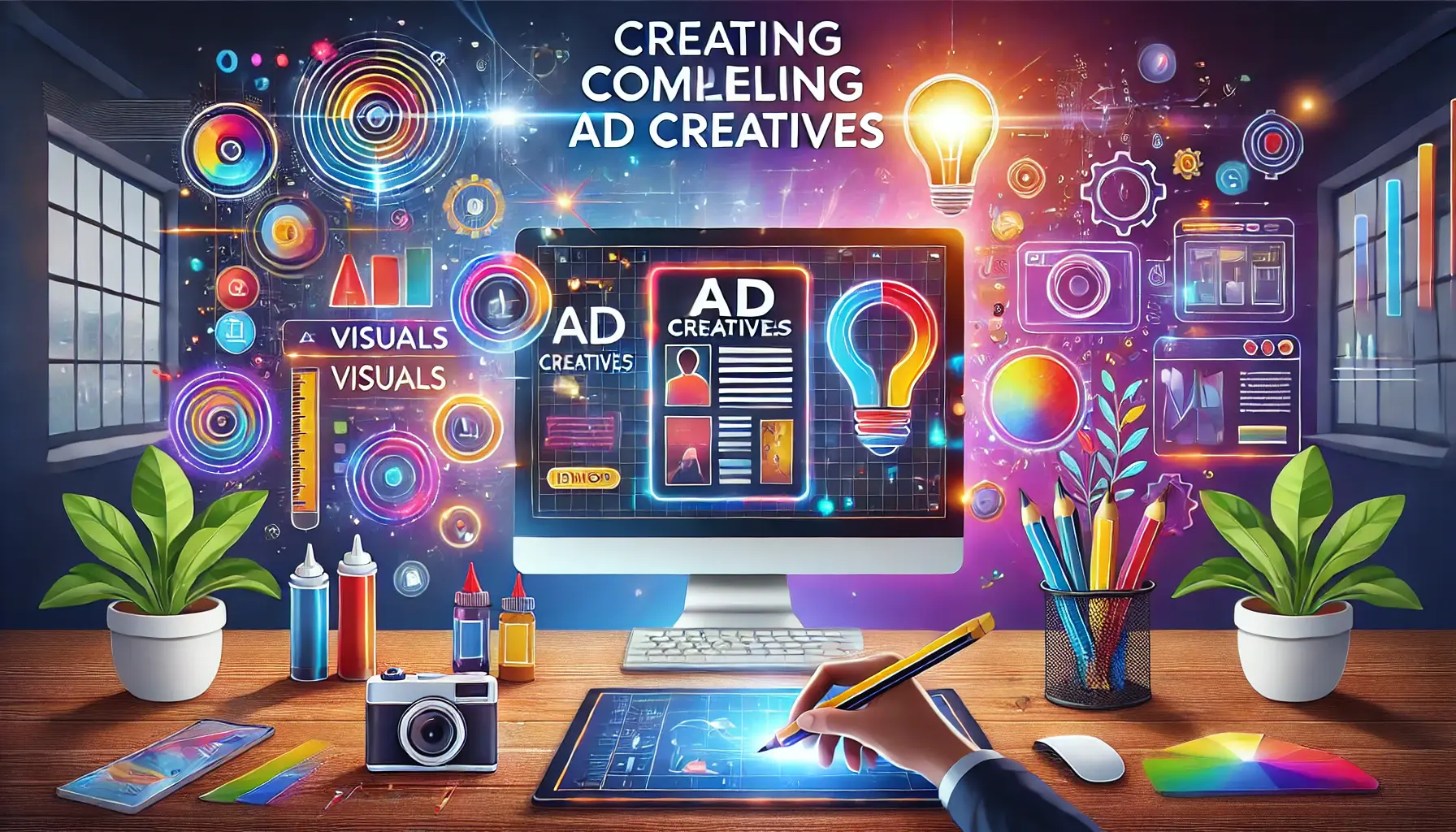
An illustration showcasing the process of designing compelling ad creatives in a collaborative and innovative environment.
Creating Compelling Ad Creatives
Developing engaging ad creatives is essential for the success of your Google Ads awareness campaign.
High-quality visuals and persuasive messaging can significantly enhance user engagement and brand recall.
Let’s explore key strategies to craft compelling ad creatives that resonate with your target audience.

An illustration highlighting the process of designing visually appealing and professional ads.
Designing Visually Appealing Ads
Visual appeal is vital when it comes to drawing attention.
Your ads should look professional and support your brand identity with high-resolution images, a consistent color palette, and harmonious typography to build brand memory.
Ensure your logo is prominently displayed for effective branding.
Here are a few design best practices to consider:
- Clarity: Use clean, uncrowded designs to communicate your message clearly.
- Contrast: Utilize contrasting colors to make key elements stand out.
- Readability: Ensure readable fonts and appropriate text sizes for better visibility.

An illustration showcasing the process of crafting clear and persuasive ad copy for marketing campaigns.
Creating Effective Ad Copy
Your ad copy should be concise, relevant, and engaging.
Make your value proposition clear, include a strong call-to-action (CTA), and encourage user engagement.
Use language that appeals to your target audience’s preferences and needs.
Effective ad copy strategies include:
- Highlight Benefits: Emphasize how your product or service addresses user needs.
- Urgency: Create a sense of urgency with time-sensitive offers.
- Personalization: Use personalized language to connect with the audience.

An illustration emphasizing the use of interactive elements to boost user engagement in digital ads.
Incorporating Interactive Elements
Interactive elements can enhance user engagement.
Consider using carousel ads to showcase multiple products or services, or incorporate videos to tell a compelling brand story.
Interactive content encourages users to spend more time engaging with your ad, increasing brand awareness.

An illustration showcasing the process of testing and optimizing ad performance through data-driven insights.
Testing and Optimizing Ad Performance
Test various ad creatives periodically to determine which works best for your audience.
Run A/B testing on your creatives to understand how different versions perform in terms of click-through rates and conversion rates.
Use these insights to optimize your ads for better performance.
Key best practices for optimization include:
- Performance Analysis: Monitor metrics to evaluate ad effectiveness.
- Iterative Improvements: Continuously refine ad elements based on insights from data.
- Audience Feedback: Consider user feedback to enhance ad relevance.
By implementing these strategies, you can create compelling ad creatives that effectively capture attention, engage your audience, and enhance the success of your Google Ads awareness campaign.
Engaging visuals and persuasive ad copy are vital for capturing attention and delivering your brand message effectively in awareness campaigns.

An illustration showcasing the process of measuring and optimizing digital campaign performance through data-driven strategies.
Measuring and Optimizing Campaign Performance
To maximize the effectiveness of your Google Ads awareness campaign, it’s essential to measure performance accurately and implement optimization strategies.
By analyzing key metrics and making data-driven adjustments, you can enhance your campaign’s reach and impact.
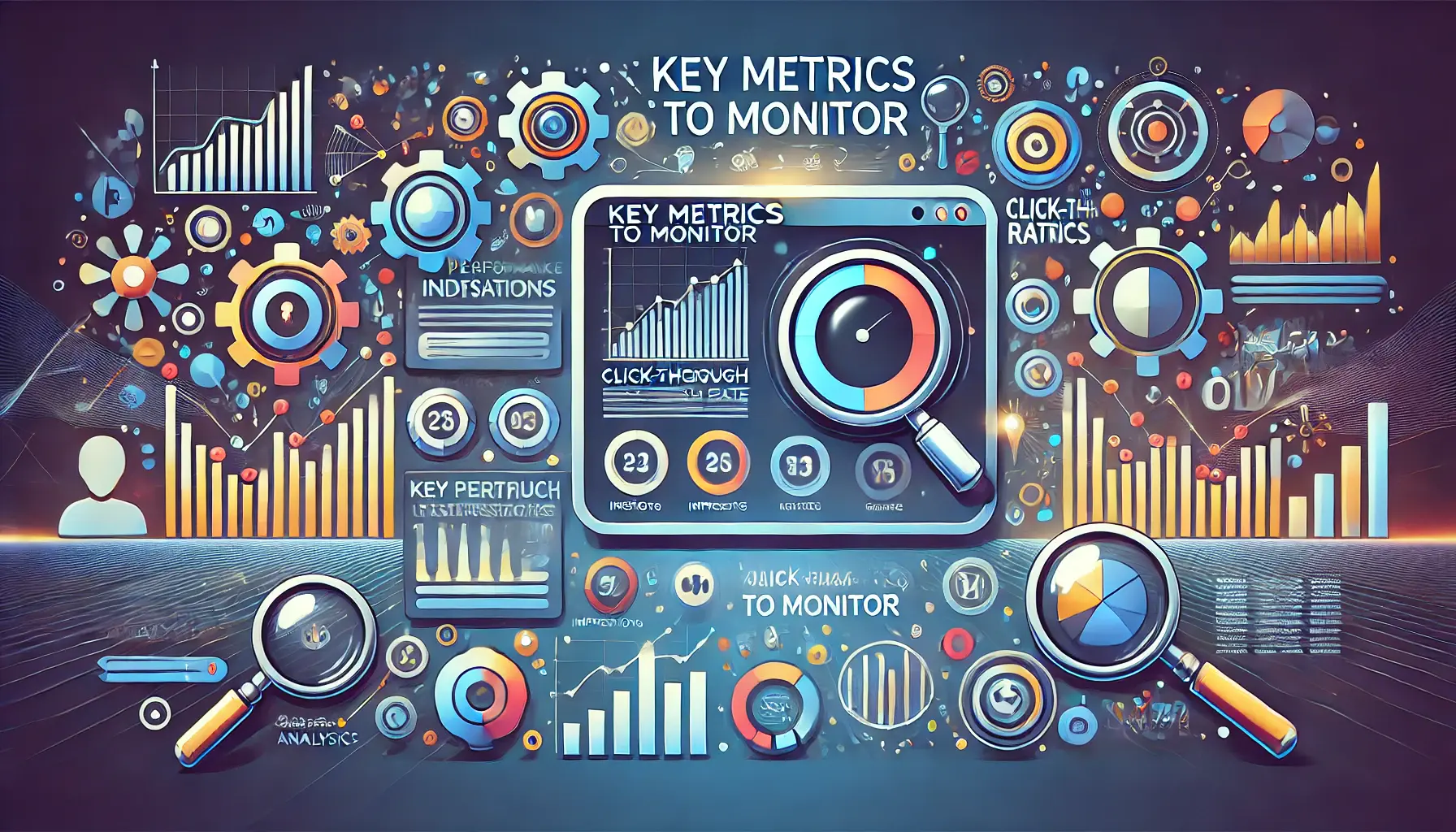
An illustration focusing on the essential metrics to monitor for successful digital campaign management.
Key Metrics to Monitor
Monitoring the right metrics provides insights into your campaign’s performance.
Focus on the following:
- Impressions: The number of times your ad is displayed, indicating its reach.
- Click-Through Rate (CTR): The percentage of viewers who click on your ad, reflecting its appeal.
- Cost Per Thousand Impressions (CPM): The cost to reach a thousand viewers, helping assess cost-effectiveness.
- Engagement Rate: Measures user interactions with your ad, such as clicks or video views.
- Conversion Rate: The percentage of users who take a desired action after clicking your ad.
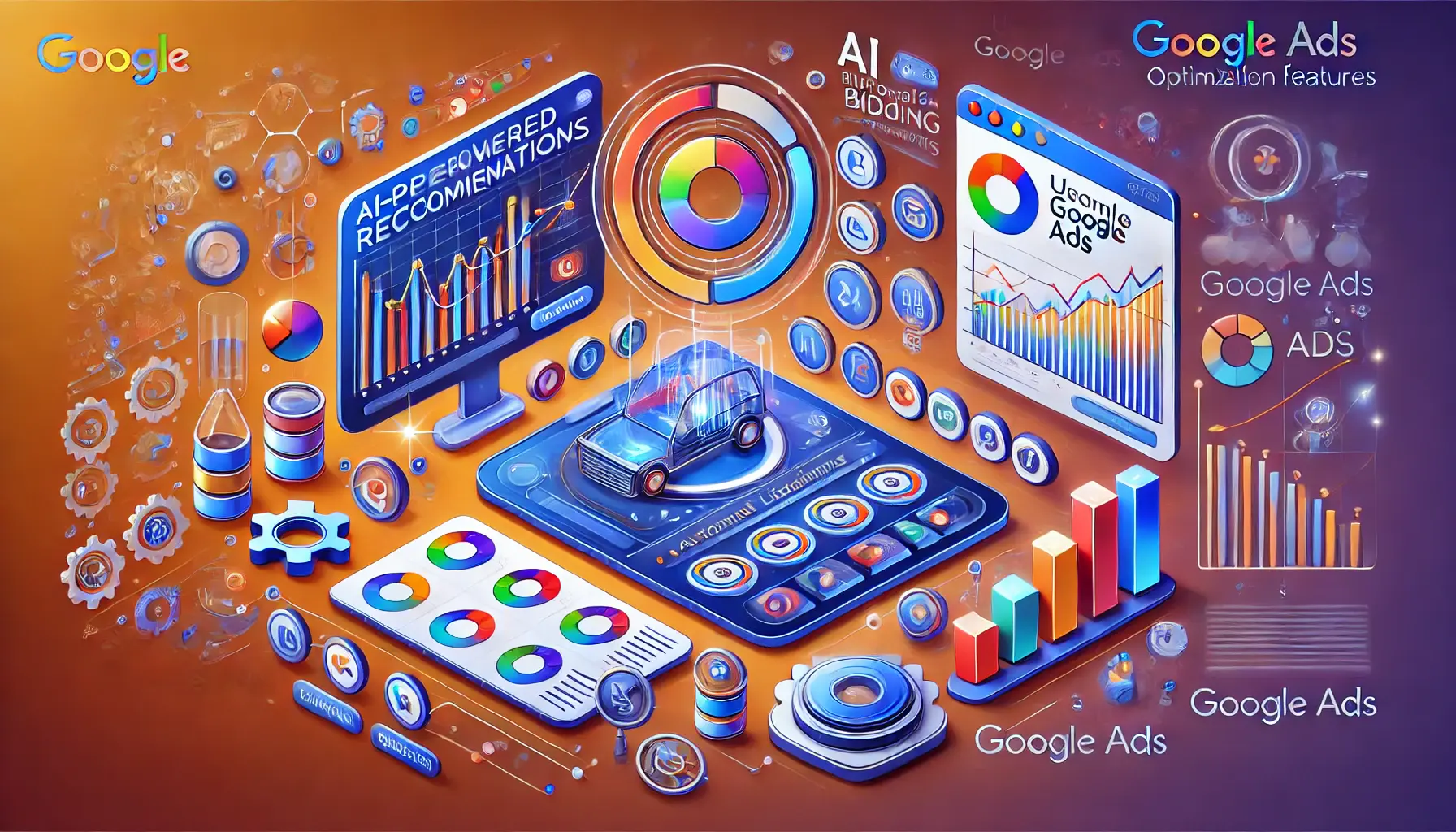
An illustration showcasing advanced Google Ads optimization features for campaign efficiency and performance.
Utilizing Google Ads Optimization Features
Google Ads offers several features to streamline optimization:
- Automated Recommendations: Google provides suggestions to improve performance, which can be applied automatically to save time.
- Performance Max Campaigns: Leverage AI to optimize across all Google channels, enhancing ROI.
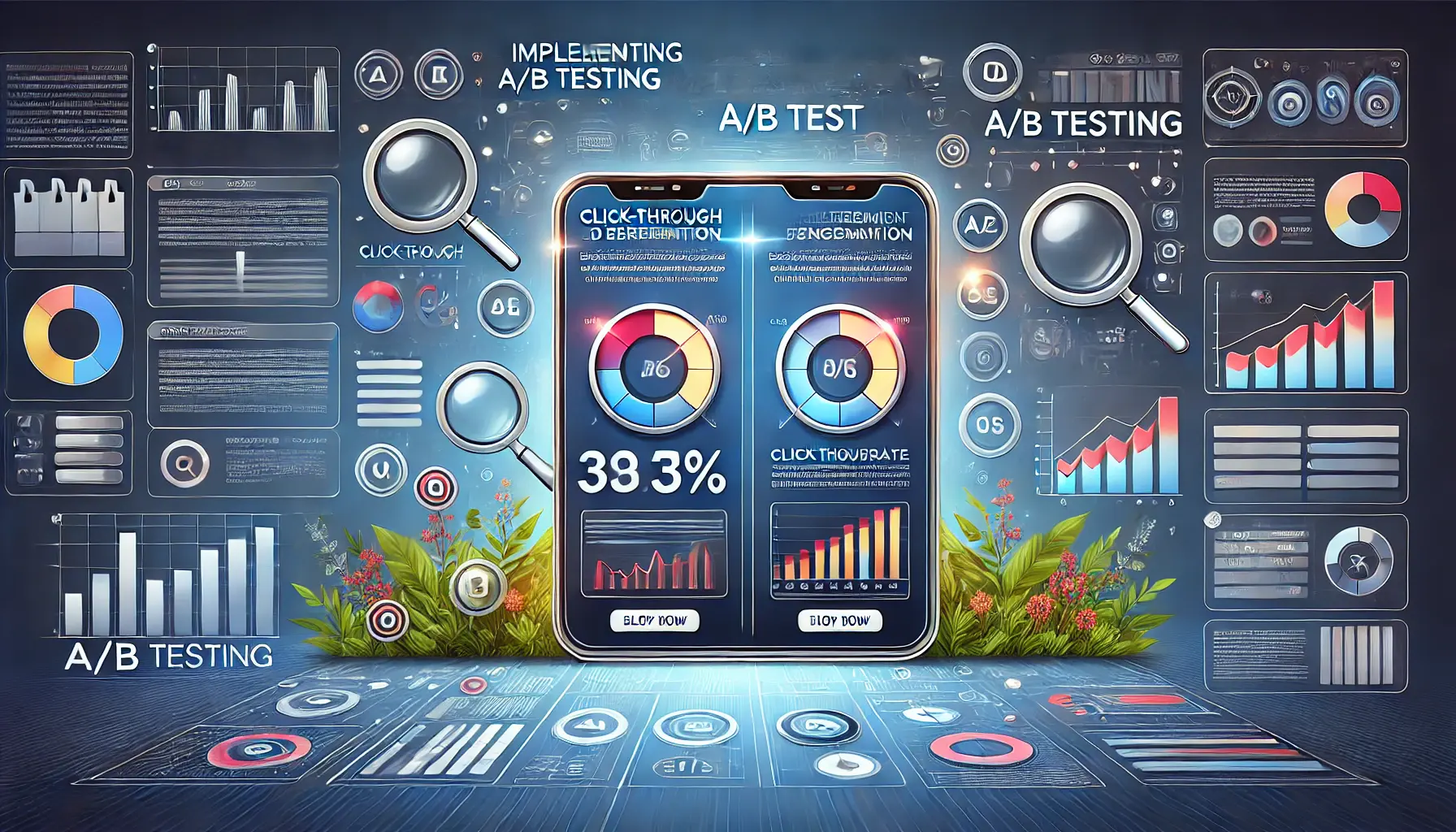
An illustration emphasizing the role of A/B testing in refining and optimizing ad campaigns.
Implementing A/B Testing
Conduct A/B testing to compare different ad elements:
- Ad Copy Variations: Test different headlines and descriptions to identify what resonates best.
- Visual Elements: Compare images or videos to determine which garners more engagement.
- Call-to-Action (CTA): Experiment with various CTAs to see which drives more conversions.
Analyze the results to refine your ads for optimal performance.

An illustration showcasing the process of adjusting bidding strategies for optimal campaign performance.
Adjusting Bidding Strategies
Optimize your bidding approach to improve cost-effectiveness:
- Automated Bidding: Utilize Google’s AI to set bids that maximize desired outcomes.
- Manual Bidding: Adjust bids based on keyword performance and competition.
Regularly review and adjust bids to align with campaign goals.
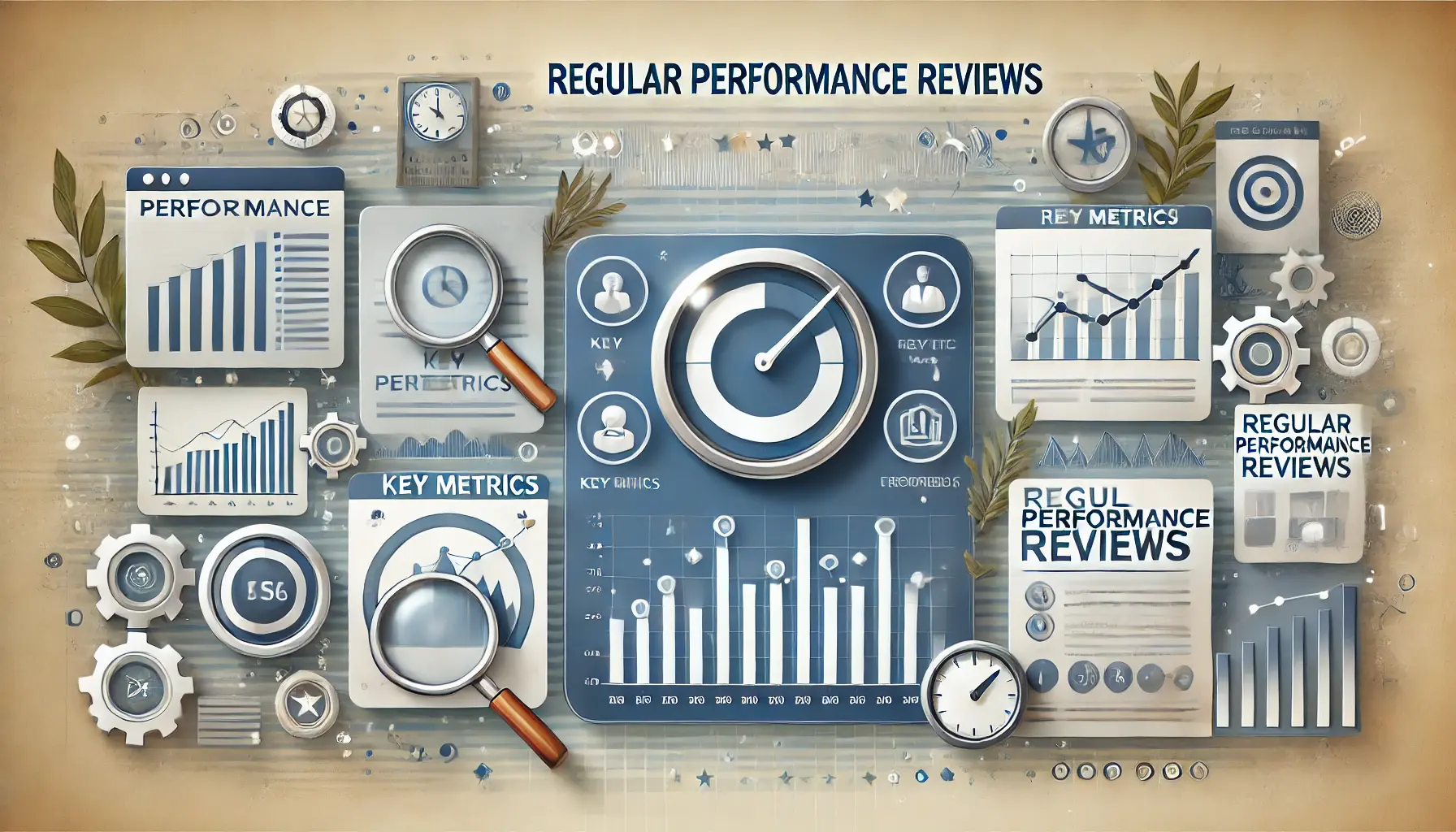
An illustration emphasizing the significance of conducting regular performance reviews for continuous campaign improvement.
Regular Performance Reviews
Consistently review your campaign’s performance to identify areas for improvement.
Use Google Ads’ reporting tools to analyze data and make informed decisions.
Regular optimization ensures your awareness campaign remains effective and aligned with your marketing objectives.
By sticking with these steps, you will be able to improve the performance of your Google Ads awareness campaign, reach your targeted audience effectively, and accomplish what you desire for brand awareness.
Consistent performance tracking and optimization are key to maintaining the effectiveness of your awareness campaign, ensuring alignment with marketing goals.
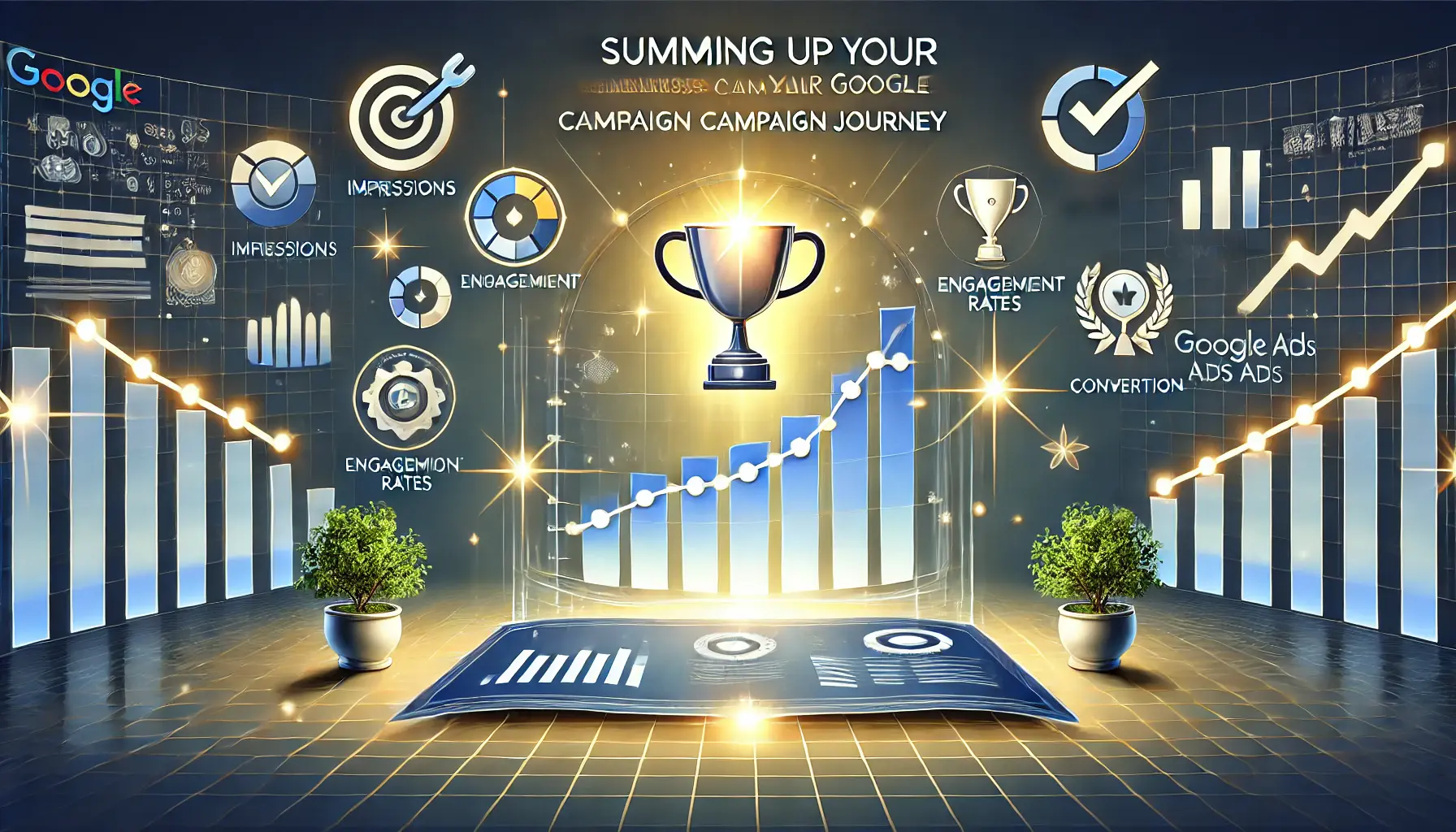
An illustration depicting the culmination of a successful Google Ads awareness campaign journey.
Summing Up Your Google Ads Awareness Campaign Journey
Engaging in a Google Ads awareness campaign is a deliberate step toward increasing visibility for your brand and creating a long-term relationship with your audience.
By planning, executing, and optimizing your campaign with due care, you can observe effective outcomes that align with your business objectives.
Let’s revisit the major steps and key strategies covered in this article.

An illustration emphasizing the importance of building a strong foundation for successful digital marketing campaigns.
Understanding the Foundation
Every successful campaign begins with a strong foundation.
Define your objectives clearly, select the right campaign type, and focus on audience targeting to ensure your ads reach the right people.
Google Ads offers diverse tools to help you achieve these goals while keeping your brand message consistent and engaging.

An illustration highlighting the process of designing high-impact ad creatives for maximum engagement.
Creating High-Impact Ad Creatives
Compelling ad creatives are at the heart of a successful awareness campaign.
Prioritize visually appealing designs, persuasive ad copy, and interactive elements that resonate with your audience.
Incorporate clear calls-to-action and maintain consistency in your branding for maximum impact.

An illustration emphasizing the integration of precise targeting and optimization in digital marketing campaigns.
Targeting and Optimizing
Utilizing Google Ads’ advanced targeting features ensures your campaign reaches the most relevant audience.
By leveraging demographic and interest-based targeting, remarketing strategies, and precise audience segmentation, you can enhance engagement and drive better results.
Regular A/B testing and performance reviews are critical for ongoing optimization.

An illustration emphasizing the critical role of monitoring and measuring success in digital campaigns.
Monitoring and Measuring Success
The right tracking of metrics is central to understanding how your campaign performs.
Metrics such as impressions, engagement rates, click-through rates, and conversion rates provide valuable insights into its effectiveness.
Google Ads reporting tools further refine your strategy and ensure continued success.

An illustration representing the achievement of brand awareness goals through effective digital marketing strategies.
Achieving Your Brand Awareness Goals
Your Google Ads awareness campaign is more than a marketing effort; it’s an opportunity to establish a meaningful presence in the digital space.
By following the strategies outlined in this article—planning effectively, creating compelling ads, targeting the right audience, and continuously optimizing—you can maximize your campaign’s potential and achieve your brand awareness objectives.
Remember, the secret to success is consistency and adaptability.
Stay ahead of trends, use data-informed insights to your advantage, and focus on delivering value to your audience.
When executed correctly, a Google Ads awareness campaign can make your brand stand out from the competition and leave a lasting impression in your industry.
A well-executed Google Ads awareness campaign can create a lasting impact for your brand by focusing on strategic planning, engaging creatives, and data-driven optimizations.
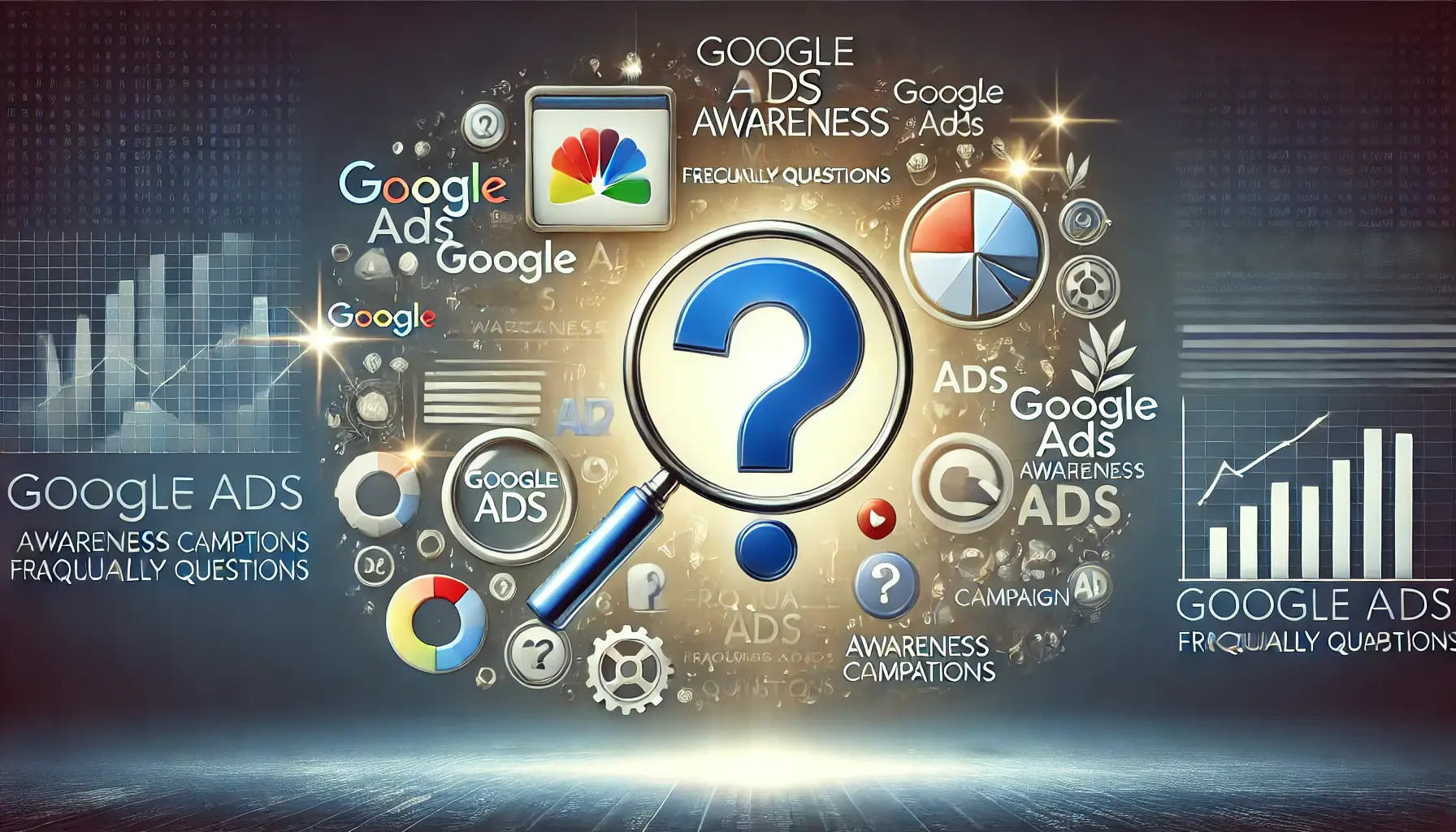
An illustration representing the process of addressing frequently asked questions about Google Ads awareness campaigns.
Your campaigns can be managed by an agency specialized in Google Ads, check out our service page.
Google Ads Awareness Campaigns: Frequently Asked Questions
Below are some of the common questions and short answers that will help you understand Google Ads awareness campaigns better.
A Google Ads awareness campaign is one that targets the visibility of your brand to a wide audience by assuring impressions and reach, rather than conversions.
To set up an awareness campaign, choose the ‘Brand awareness and reach’ goal in Google Ads, select appropriate ad formats, define your target audience, and set your budget and bidding strategy.
Rich-media formats like image and video ads are effective for awareness campaigns, as they capture attention and convey your brand message more engagingly.
Monitor metrics such as impressions, reach, engagement rate, and ad recall surveys to assess the effectiveness of your awareness campaign.
Utilize demographic targeting, affinity audiencesGroups of users who have shown long-term interest in specific topics, products, or services., and in-market audiencesUsers actively researching or comparing products and services, indicating they are close to making a purchase. to reach users who are likely to be interested in your brand.
The duration depends on your marketing goals, but running the campaign for at least several weeks can help achieve sufficient reach and frequency.
Yes, incorporating remarketing strategies will reinforce brand recall by targeting users who have previously engaged with your website or content.
Budget allocation varies based on your objectives and resources; however, ensuring sufficient budget to achieve desired reach and frequency is crucial.
Design visually appealing ads with clear messaging, consistent branding, and strong calls-to-action to effectively engage your target audience.











